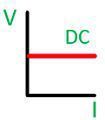A Static Transfer Switch (STS) utilizes a static electronic component (SCR), which permits a transfer in less than four milliseconds (1/4 of an electrical cycle). ... On the other hand, an Automatic Transfer Switch (ATS) relies on moving parts and makes a significantly slower transfer than Static Transfer Switches.
Static Transfer Switch (STS) is a Static Electric device designed to automatically transfer load for the preferred power source to the standby power source connected to its input in case of disruption in the former and visa versa without any interruption of server room load.
Automatic transfer switches act as the "brain" of your entire electrical system. Once installed, they can automatically switch between electricity coming from your utility and generator power. When the transfer switch detects a power outage, it switches your home to generator power.



